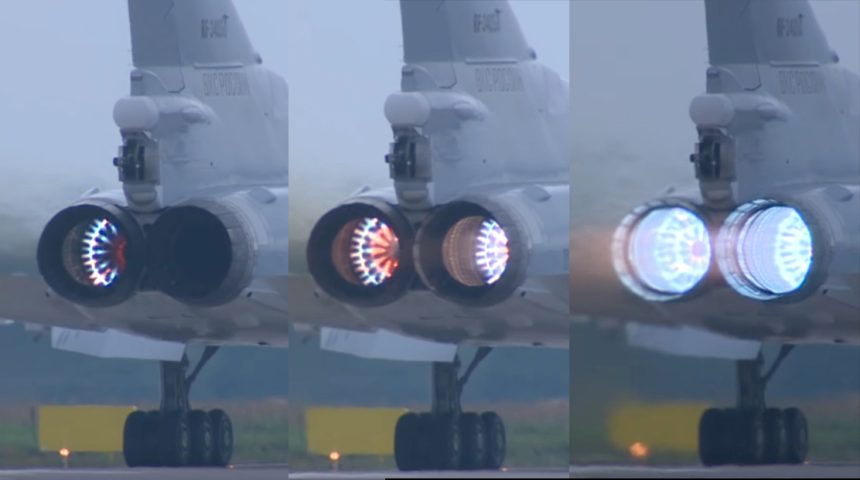A really interesting video showing the Backfire and its Kuznetsov NK-25 engines at work.
The video below is pretty impressive for various reasons.
First of all, it provides a detailed look at one of the most interesting Russian bombers: the Tupolev Tu-22M3 Backfire. The one pictured in the clip is is the example serialled RF-34050 taking off from Gromov Flight Research Institute (GFRI), an important Russian State Research Centre which operates at Zhukovsky, 40 km to the southeast of Moscow.
The Tu-22M3 is a replacement of the Cold War-era Tu-22 Binder, a twin-engine supersonic bomber with variable geometry swept wings. The Tu-22M3 and M3M variants are in wide service in Russia, with over 80 reported in flying with the Russian Air Force and more than 40 in use with Russian Naval Aviation as long-range maritime patrol, surveillance and attack aircraft. Indeed, the aircraft was primarily developed as an anti-ship missile carrier for the Soviet/Russian supersonic Kh-22/32 anti-ship missiles with range of up to 1,000 km (621 miles) as well as for smaller Kh-15 missiles with range of up to 300 km (160 miles).
Second, the video shows with unprecedented detail the afterburner ignition sequence and the subsequent generation of the typical blue plume of many Russian engines (from 07:00 mark). In fact, as opposed to the orange plume you can observe on Western afterburners, Russian ones appear to be blue in color meaning that all the injected fuel is burnt before exiting the nozzle (the result of the engine design and the way fuel is dumped into the center of the cylinder): there is a more complete combustion and the reaction creates enough energy to excite and ionize gas molecules in the flame, leading to a blue flame appearance. In other words the blue flame is produced by molecular radicals, especially CH and C2, which emit most of their light in the blue region of the visible spectrum. The orange color is instead caused by fuel not completely burned out before exiting the nozzle, thus creating soot (unburnt carbon particles) that glows in the heat of the flame giving the orange color.
Third, it’s pretty unusual for an aircraft (especially for a strategic bomber) to keep afterburner so long after taking off: unless it is a fighter jet in QRA (Quick Reaction Alert), scrambled to intercept an unknown or “renegade” traffic, once the jet has reached a safe altitude and speed seconds after taking to the air, the pilot usually reduces the throttles as reheat is no longer needed, reducing thrust and fuel consumption. We don’t know what kind of mission or test the Tu-22M3 had launched for, but surely it required more afterburner than usual.









